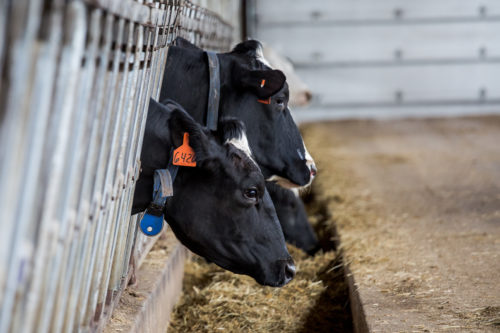Successfully Managing Long Dry Periods
Posted: May 15, 2020 | Written By: Kevin Buttles, MAT, PAS, Form-A-Feed Nutrition and Production Specialist

The last two or three months have certainly brought extreme challenges and difficulties to our personal and business lives like we have never seen before. The need to produce and ship less milk during a time of depressed milk prices has caused dairy farm owners and managers to make difficult decisions, many of which are contrary to typical management strategies that have contributed to total farm profitability in the past. Increased culling, making nutrition and feeding adjustments to purposely lower production, switching from 3X to 2X milking, feeding more milk to calves, feeding milk back to cows, and drying off cows early were among the strategies implemented to lower pounds of milk shipped. Each of these strategies comes with its own set of cautions and the need to manage the details to make them work as best that they can.
I would like to highlight four of those details involved in successfully managing long dry periods.
- Do not allow cows with extended dry periods to gain in Body Condition Score. Simply maintaining body weight will be key in making this strategy work. A BCS of 3.0 to 3.25 is plenty at dry off and there is no need to increase it! This will require those dry cows to have high intakes of a very low energy diet. Consider low energy feeds such as straw, mature hays, corn stalks, and oat hulls. As with any group of cows, be aware of molds, toxins, and ash content to make sure the health of the cow and fetus are not compromised. An alternative would be to pasture those dry cows, as the exercise provides additional benefits to weight control and muscle tone. Be aware that some pasture forages, especially early in the growing season, may provide too much energy and should not be considered for this purpose.
- Every cow may not be a candidate for the early dry off/long dry period strategy. The culling strategy will be a better choice for any cow that is already beyond the BCS of 3.25. Each farm’s feed costs, milk pay price, and other economic factors can be used to provide a logical system of identifying who should be dried off next. Your Form-A-Feed Nutritionist and Dairy Technical Service Specialists have the financial tools to help you with individual cow dry off and culling decisions.
- If your typical dry cow pen was built around a one-group nutritional program, you will want to go to a two-group program for those cows with extended dry periods to help manage body weight gain. This will allow for an extended low-energy, high-roughage far-off pen, followed by a 21-day pre-fresh or close-up pen, which has a higher cost ration comprised of elevated metabolizable protein, energy, and critical micro ingredients.
- It is well documented that cows with long dry periods are at a much higher risk of metabolic problems, particularly those associated with fat metabolism, and lower milk production in the subsequent lactation. Therefore, it will be more important than ever to get those dry cows on a good prefresh diet three to four weeks before calving. This will be the place and time to reinvest in those cows to ensure a fast, healthy start to their next lactation, maximizing production potential.
Form-A-Feed’s Prime Life Vitality Add-Pack is the perfect combination of ingredients for transition dairy cows to address the stress of calving and the metabolic problems that are more prevalent with long dry periods. Fat cows, sub-optimal feed intakes, TMR sorting, and overstocked pens are also prime risk factors for metabolic challenges.
Below is a chart detailing the benefits of this unique blend of ingredients, all of which have been backed by industry research that have reported positive results for the transition cow. (Recent research has indicated that some of these components can also improve the health and growth rate of the calf.)
Rumen Protected Choline
Assists with fat metabolism and liver health, reducing NEFAs and incidences of ketosis.
Rumen Protected Chromium
Improves uptake of glucose, reducing NEFAs, increasing DMI; all providing more energy to the cow.
Rumen Protected Methionine
This methyl donor assists other components mobilize fat, improve liver health, reducing incidences of ketosis.
Encapsulated B Vitamins
Used for metabolic processes, digestion, and immune health. Antioxidants improve the health status of the cow and the calf.
Bypass Protein
Provides a source of rumen undegradable protein needed for high producing cows in early lactation.
Aspergillus Oryzae
Helps improve intakes and fiber digestion, providing more digestible energy to the cow.
Prime Life Vitality Add-Pak has been a sound part of Form-A-Feed’s transition cow program since 2009, and now would be the perfect time to include it in your program, whether you chose to extend your dry period lengths or not. The benefits have been well documented and return on investment is significant. Work with your Form-A-Feed Nutritionist to determine the benefits your cows can experience when they freshen in again.
Although we all hope the dairy economy and infrastructure gets back to some degree of normalcy soon and we can put aside some of those production limiting strategies, we always want to be managing our transition and early lactating cows for maximum performance. The end result of a good transition is maximum peak milk and milk summit at 90 days with excellent 305-day persistency. Setting your genetically superior cows up for success will typically result in reduced metabolic health events, higher milk peaks, and predictable reproduction targets – all leading to maximum profit.